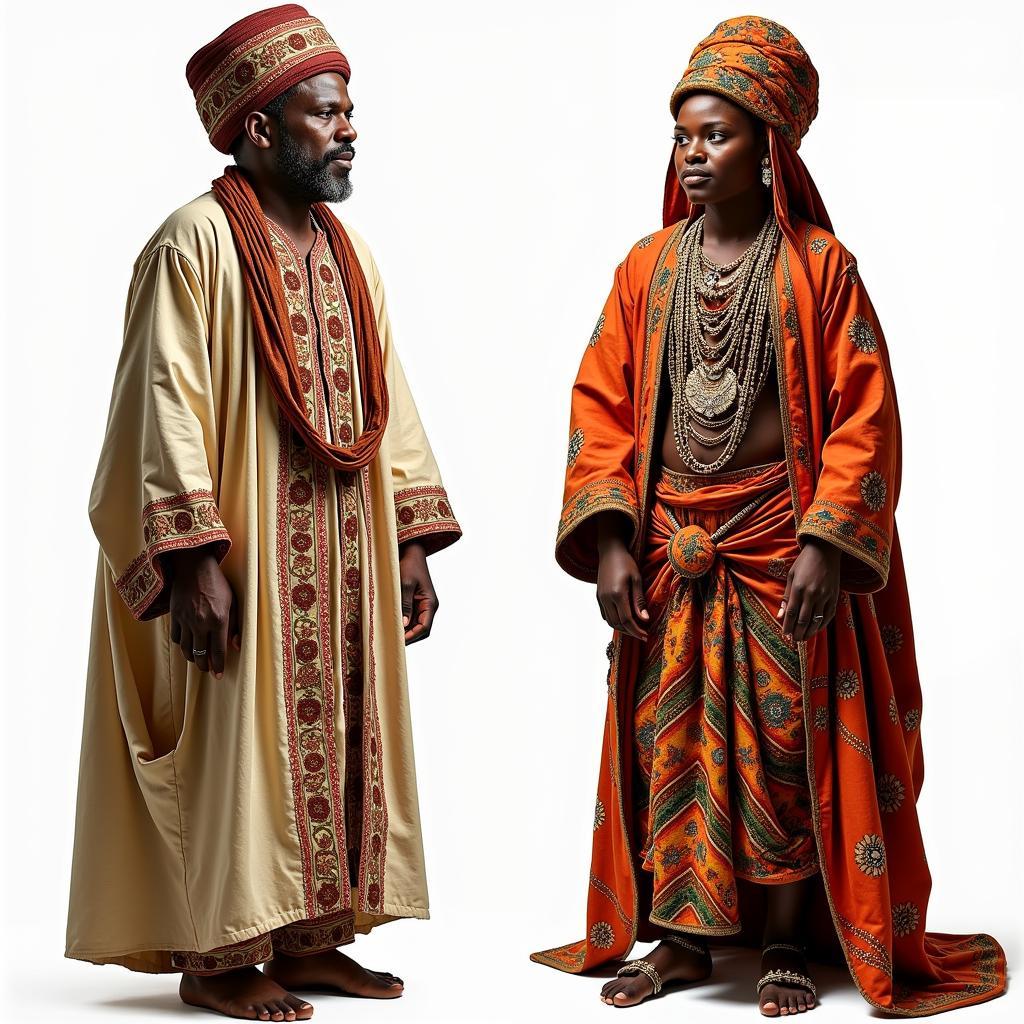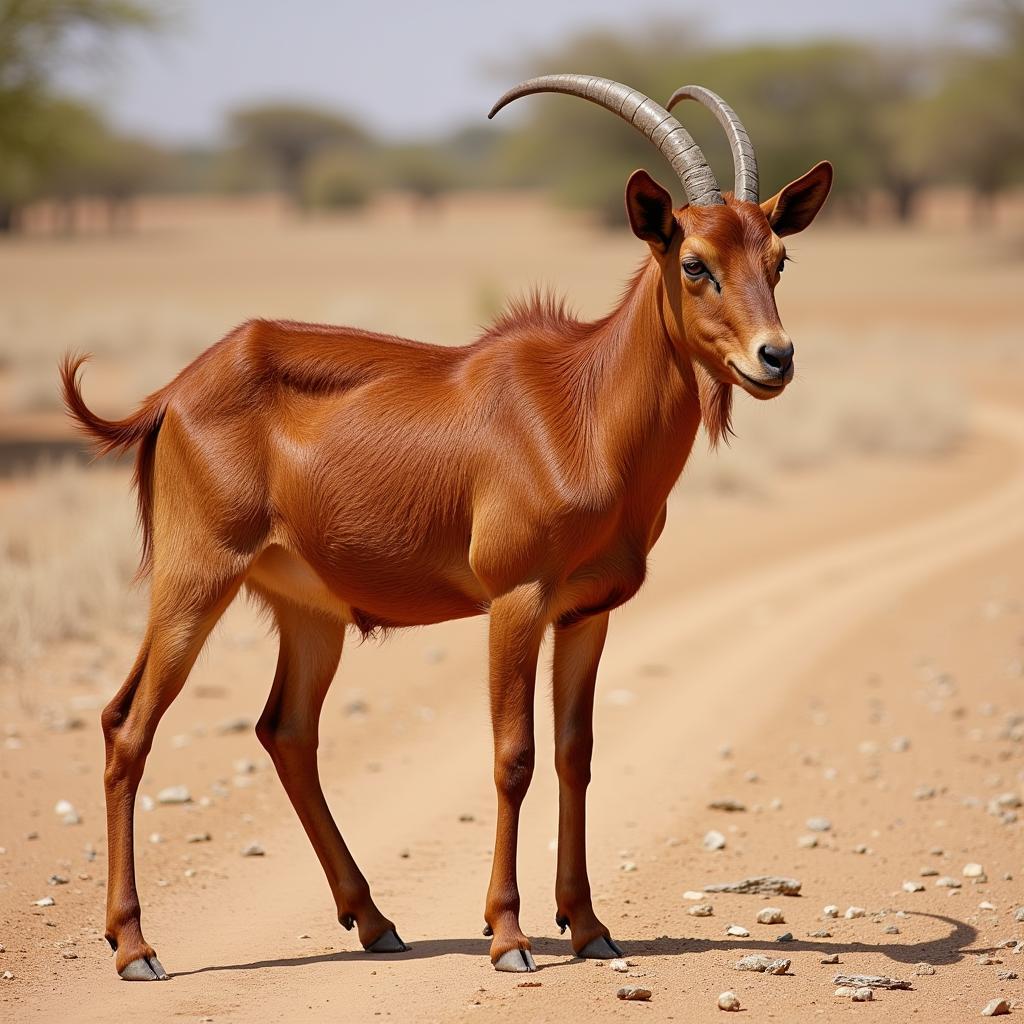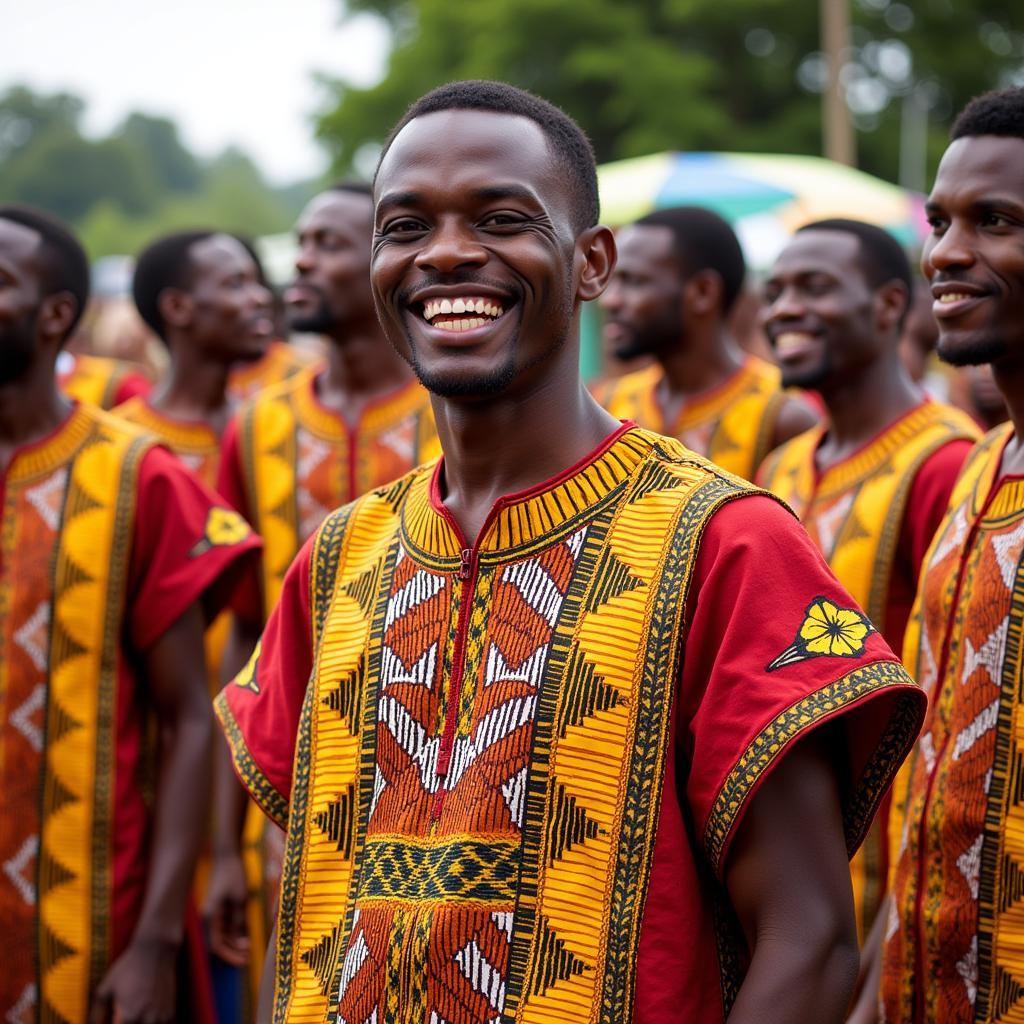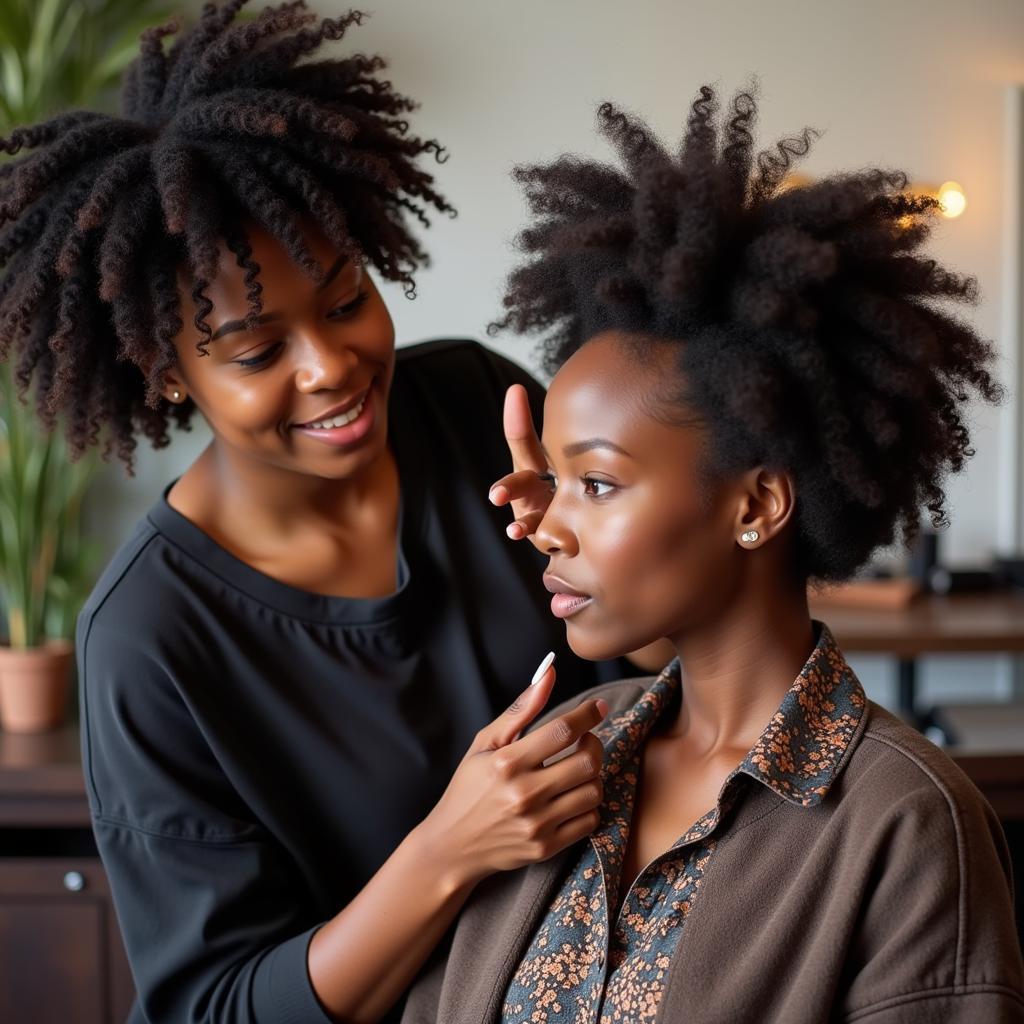African Costumes and Tradition: A Vibrant Tapestry of Culture
African Costumes And Tradition are deeply intertwined, reflecting the continent’s rich history, diverse ethnic groups, and profound connection to the land. From the intricate beadwork of the Maasai to the vibrant kente cloth of Ghana, each garment tells a story, revealing social status, spiritual beliefs, and artistic expression. These traditions, passed down through generations, offer a glimpse into the heart of Africa’s cultural heritage.
The Significance of African Costumes
African clothing is more than just fabric and adornment; it’s a powerful symbol of identity. Costumes play a vital role in ceremonies, rituals, and everyday life, communicating nonverbally within communities. The choice of colors, patterns, and materials often holds deep meaning, reflecting ancestry, social standing, and even marital status. For instance, the bold red and ochre hues favored by some tribes symbolize strength and vitality, while intricate geometric designs might represent specific clans or beliefs. The use of natural materials like animal hides, raffia, and cotton speaks to a close relationship with the environment.
The production of traditional African costumes is often a communal activity, with skills and knowledge passed down through generations. Weaving, dyeing, and embellishing fabrics are considered art forms, requiring patience, precision, and a deep understanding of cultural symbolism. About African Tribes Costumes provides a deeper understanding of these artistic traditions.
Exploring Regional Variations in African Dress
The vastness of Africa contributes to the incredible diversity of its costumes and traditions. From North Africa’s flowing robes and intricate embroidery to the vibrant textiles and elaborate headdresses of sub-Saharan Africa, each region boasts its unique style. In West Africa, kente cloth, known for its bright colors and complex patterns, is a symbol of royalty and prestige. The Yoruba people of Nigeria are renowned for their Aso Oke fabric, used in elaborate garments for special occasions. Further south, the Zulu people of South Africa utilize intricate beadwork and animal hides in their traditional attire, reflecting their warrior heritage. Understanding these regional variations provides a deeper appreciation for the complexity and richness of African culture.
What are some common materials used in African costumes? Many traditional African garments are made from natural resources, such as cotton, raffia, animal hides, and barkcloth.
 North African vs. Sub-Saharan African Clothing
North African vs. Sub-Saharan African Clothing
African Dance and Costumes: A Celebration of Life
Dance is an integral part of African culture, often intertwined with storytelling, rituals, and celebrations. Costumes play a vital role in these performances, enhancing the movements and conveying the narrative. Masks, headdresses, and elaborate body adornments transform dancers into characters, spirits, and deities, adding a layer of symbolism and drama to the performance. You can explore African Dance Videos to witness the vibrant synergy between costume and movement. Whether it’s a celebratory harvest dance or a solemn ritual, the combination of costumes and dance creates a powerful and moving spectacle.
Why are masks often used in African dance? Masks are frequently used in African dance to represent spirits, ancestors, or deities, adding a spiritual dimension to the performance. They can also be used to transform the dancer into a different character, enhancing the storytelling aspect of the dance. If you are interested in learning more about the broader context, you can also download African dance.
The Future of African Costumes and Tradition
While modern influences are increasingly present, there is a growing movement to preserve and celebrate traditional African costumes and traditions. Designers are incorporating traditional techniques and materials into contemporary fashion, showcasing African heritage on the global stage. African Costumes and Textiles offers a glimpse into this exciting fusion of old and new. This renewed interest ensures that the vibrant tapestry of African culture continues to thrive and inspire future generations.
In conclusion, African costumes and tradition are a testament to the continent’s rich cultural heritage. From the intricate beadwork to the vibrant textiles, each garment tells a story, reflecting the history, beliefs, and artistic expression of its people. By understanding and appreciating these traditions, we gain a deeper understanding of the diverse and dynamic cultures that make up Africa.
FAQs
- What is the significance of color in African costumes? Color often holds symbolic meaning, representing different clans, social statuses, or spiritual beliefs.
- How are traditional African costumes made? Traditional techniques involve weaving, dyeing, and embellishing fabrics using natural materials.
- What is the role of costumes in African dance? Costumes enhance the movements and storytelling within dance performances.
- Are African costumes still worn today? Yes, both in traditional ceremonies and in contemporary adaptations.
- How can I learn more about African costumes and traditions? Research online, visit museums, and explore cultural centers.
Need More Information?
Explore more articles and resources related to African culture and tradition on our website. You can find information on specific tribes, regions, and art forms.
Contact Us
For further assistance or inquiries about African costumes and traditions, please don’t hesitate to contact us:
Phone: +255768904061
Email: kaka.mag@gmail.com
Address: Mbarali DC Mawindi, Kangaga, Tanzania
We have a 24/7 customer service team ready to assist you.



